It is fitting that peridot is the birthstone for August, the sunniest month of the year, as the ancient Egyptians called peridots “the gems of the sun” and believed that they fell from the sky, but that is not the only reason that peridot is out of this world.
Ancient peridot
The Egyptians so revered peridot that their priests crushed and drank peridot in a ritual designed to bring them closer to the light of the world. It is now thought that at least some of Cleopatra’s ‘emeralds’ were in fact peridot as the only known source of peridot was the island of Zabargard (St John’s Island) off the Egyptian coast.
The Egyptians were not the only ancient civilisation to worship peridot: In Hawaii they were thought to be the tears of Pele, the Goddess of Fire and Volcanos and has one of only three beaches in the world to have green sand caused by a high olivine content. Peridot is the transparent gem quality form of olivine and is formed in the heat and pressure of the earth’s mantle. The gem is transported to the surface by volcanic activity, and when the volcano Kilauea erupted in 2018, olivine did indeed rain from the sky.
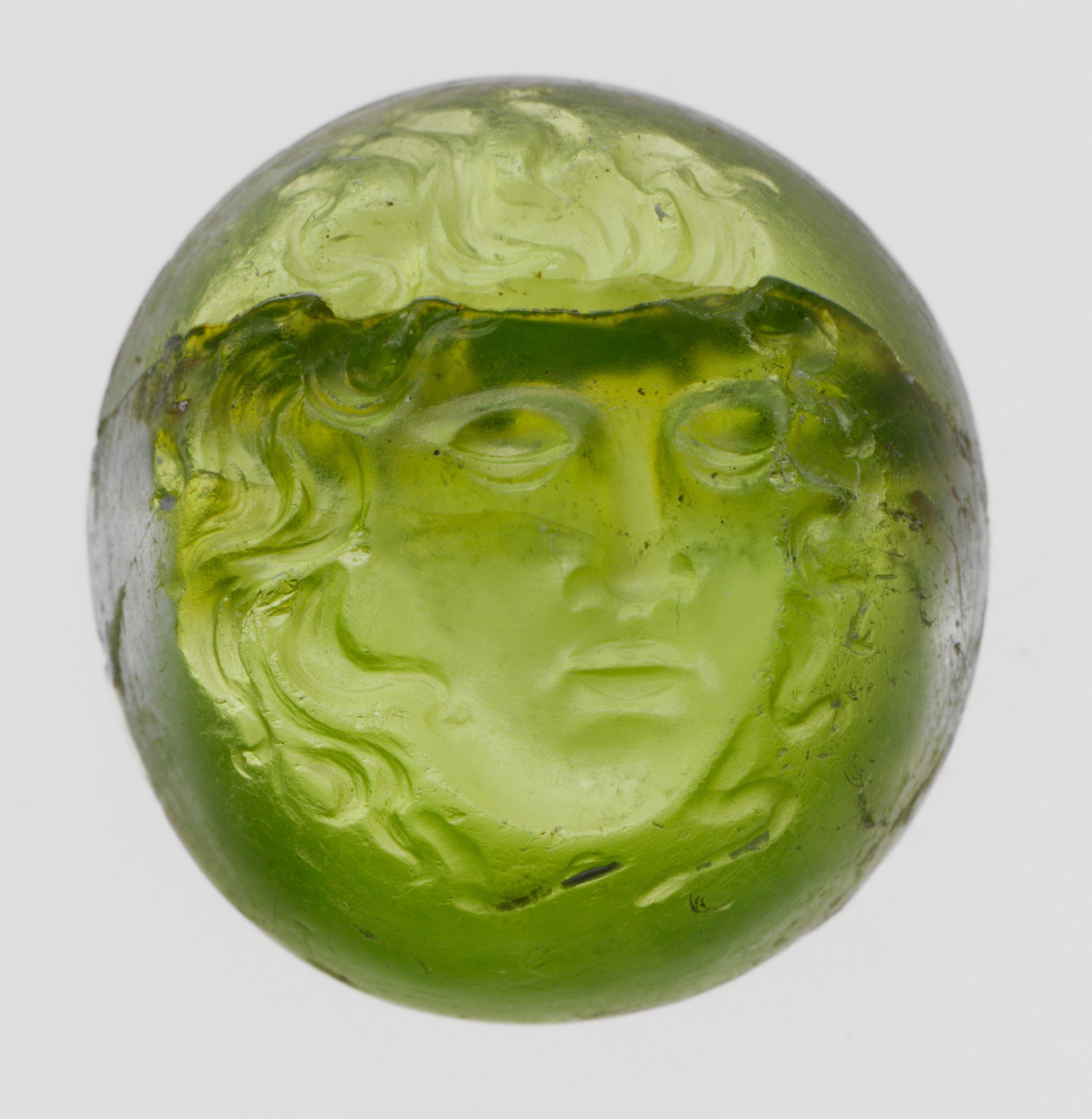
The association with light follows peridot to Greece where it was called ‘evening emerald’ due to the belief that it was invisible during the day but shone in the evening and night. According to the scholar Agatharchides peridot was mined by placing bowls over the glowing stone at night and returning in the morning to remove all that was under it. While Peridot is visible in the day it has a lustre often referred to as oily or greasy which is particularly attractive in lower light levels like candlelight.

A Peridot Line Bracelet
Protective peridot
Another of the remarkable properties thought to be held by peridot was that it could protect from the terrors of the night, especially if set in gold. Peridot was supposed to offer a different sort of protection in medieval Europe with Marbode writing in his Liber de Lapidibus that peridot was ‘a protection against the wiles of evil spirits’ but only if ‘pierced, strung on the hair of an ass, and worn on the left arm’.
Whilst the west relied on the mines of Zabargard, it’s possible that the Ottomans had an alternative source, certainly they used a great quantity of peridot in their jewellery and decorative objects. A wonderful example of this is the Bayram Tahti (The Golden Festival Throne) given to the Ottoman sultan Murad III in 1585 and studded with 957 peridots. It can still be seen in Topaki Palace in Istanbul.

While mining for peridot continued on Zabragard until the second world war, other sources were discovered including Myanmar (Burma), Pakistan, and the United States. This was fortuitous because peridot’s popularity grew during the 1800’s with fantastic pieces such as the Habsburg Parure being created. Constructed in the 1820’s it features an impressive tiara, stunning necklace, drop earrings, and a substantial brooch, all set with enormous peridots surrounded by diamonds. First worn by Archduchess Henriette of Austria it passed through the family to be immortalised in a photograph of Princess Isabelle of Crӧy when she wore it to the coronation of Emperor Charles I of Austria-Hungary in 1916. After the exile and death of Archduke Friedrich the parure was sold to and then changed hands again to be owned by a jeweller who loaned pieces to the stars, which is how Joan Rivers was photographed in the necklace and earrings on the red carpet in 2004.
Peridot possibly reached its peak popularity in the late Victorian and Edwardian period when it was often set with amethyst and pearls to make the popular colour combination green, white, and purple which was sometimes used to show support for the suffragette movement. No doubt peridot’s fashionable status was helped by King Edward VII’s preference for the gem. Famed for his love of luxury, King Edward was said to favour peridot for its leek-green colour, which he considered lucky, and particularly enjoyed them set with diamonds.
Peridot origins
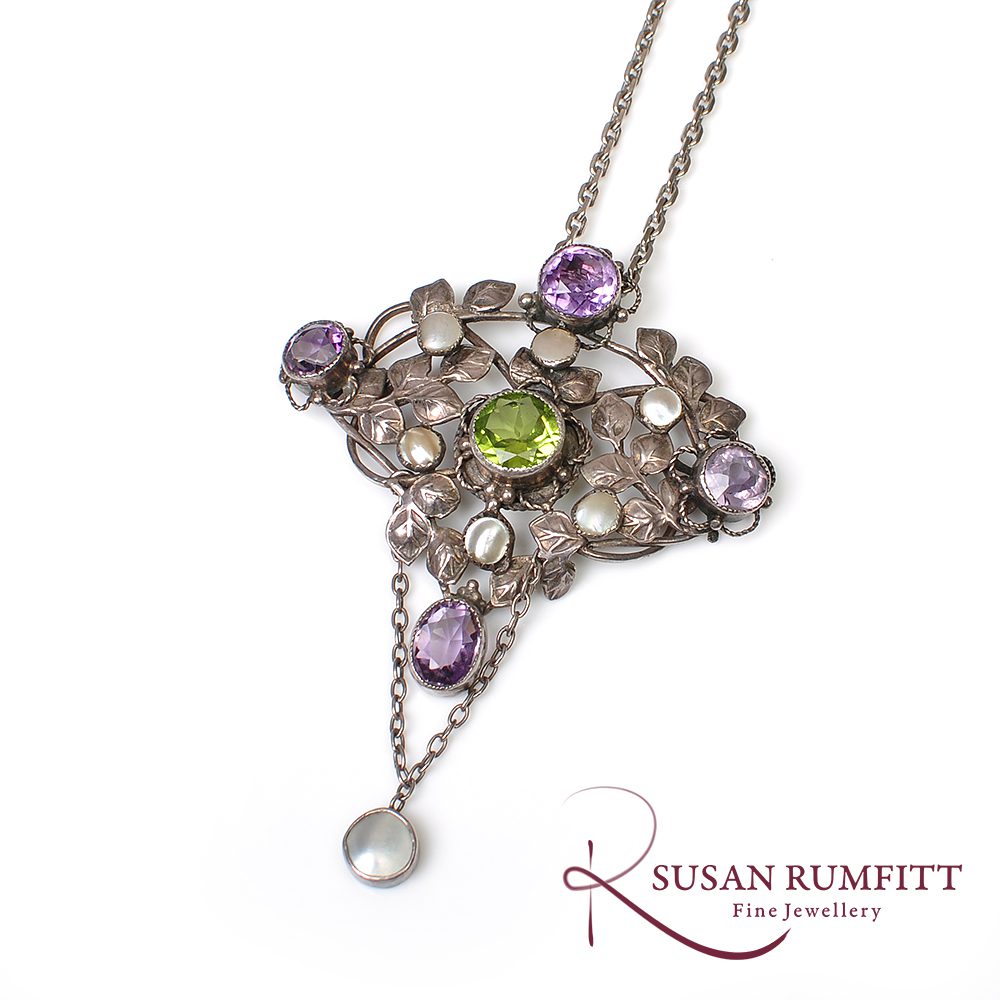
Arts & Crafts Pendant
Currently over 80% of peridot is mined in the United States however the highest quality gems are usually thought to come from Myanmar and recently China. However, peridot is not only found in the ground; peridot can also be found in meteors in small fragments surrounded by meteoric iron. A fantastic example is the Imilac meteor in the Natural History Museum that crashed down to earth 4.5 billion years ago. Nasa have also found peridot on the moon and mars, proving that peridot is truly out of this world.
Peridot at Susan Rumfitt Fine Jewellery
We have a stunning selection of sunny peridot jewellery in our Harrogate gallery, including:
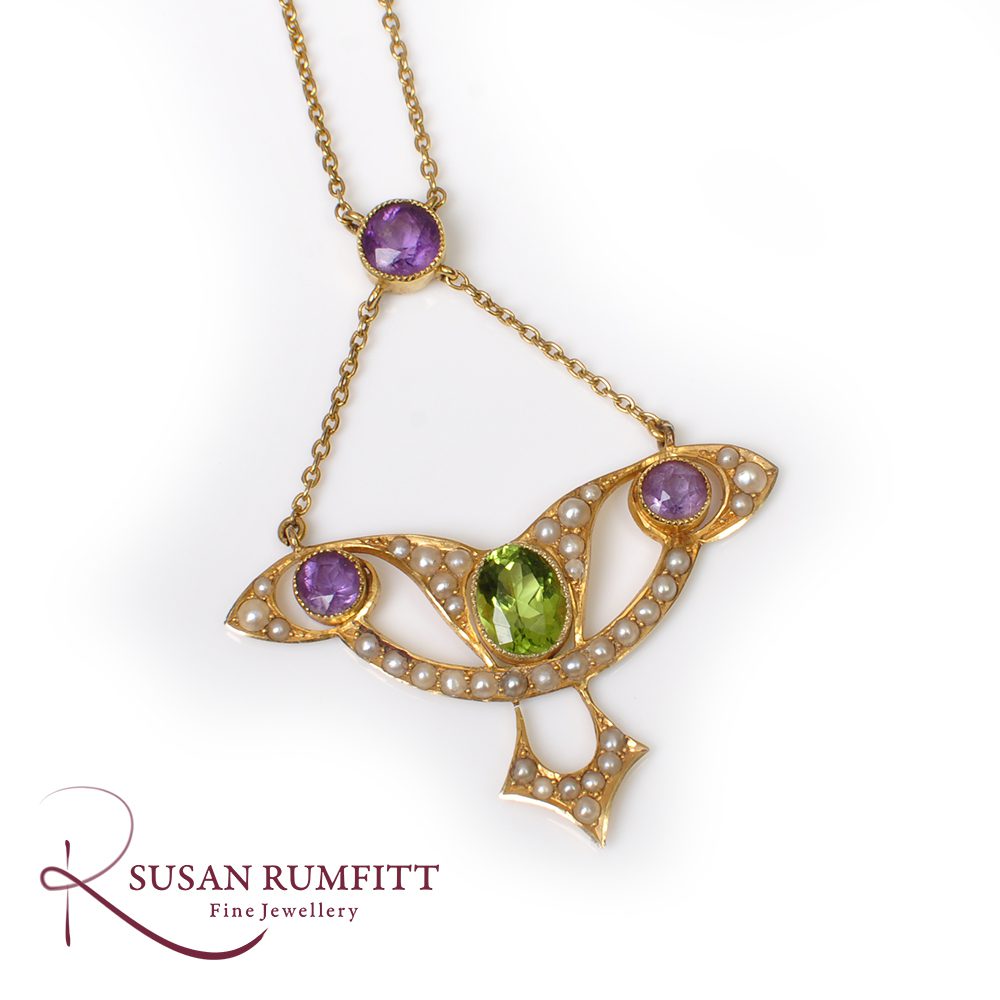
Art Nouveau Necklace
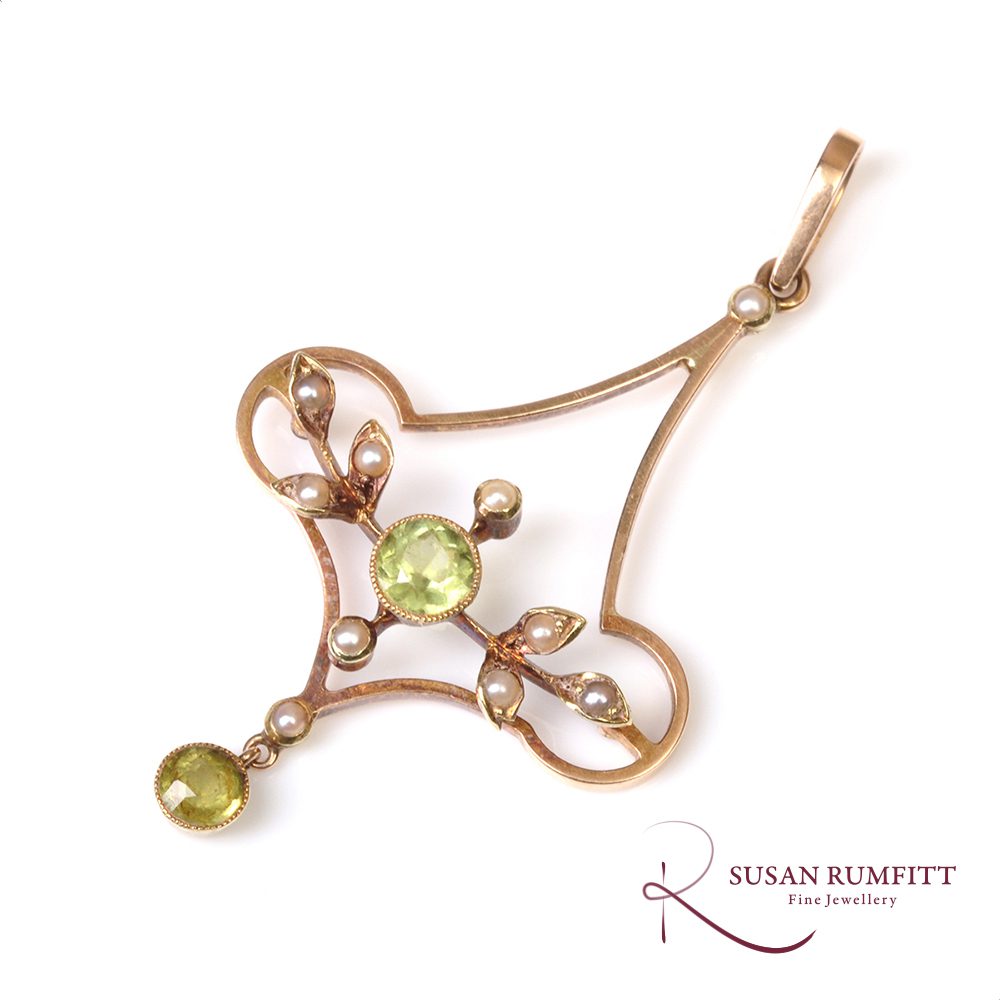
Antique Peridot and Seed Pearl Pendant
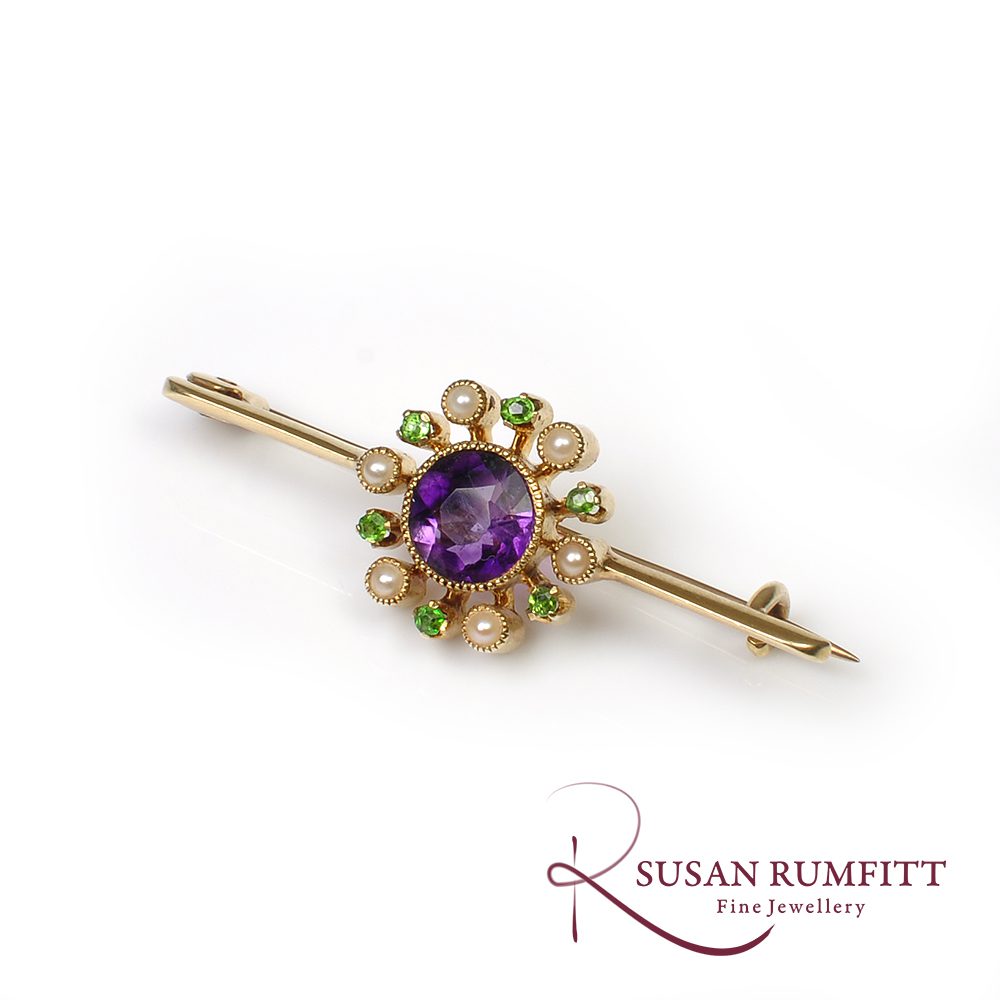
Edwardian Amethyst, Peridot and Seed Pearl Brooch

A Pair of Victorian Amethyst, Peridot and Baroque Pearl Earrings, circa 1890

Late Victorian Pendant

